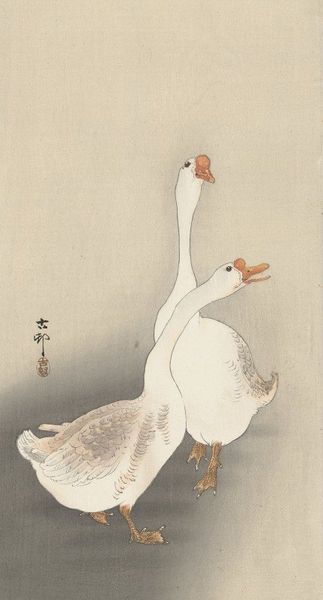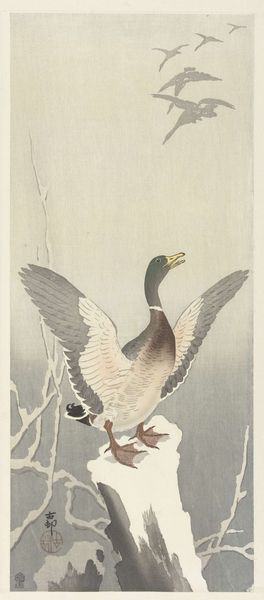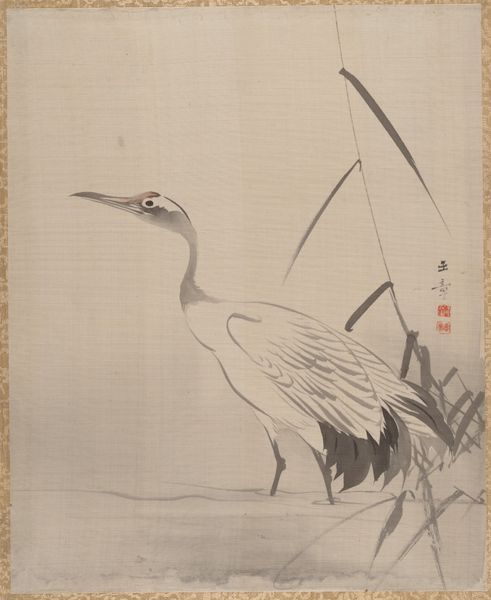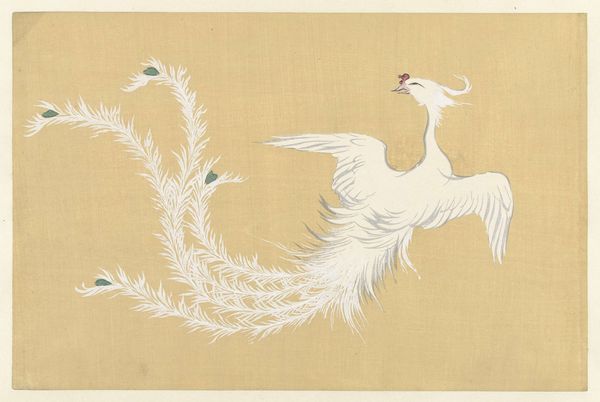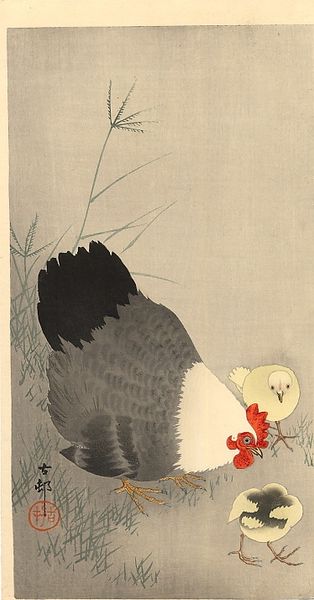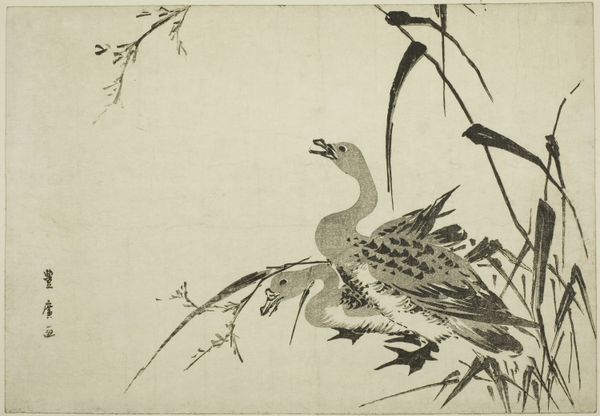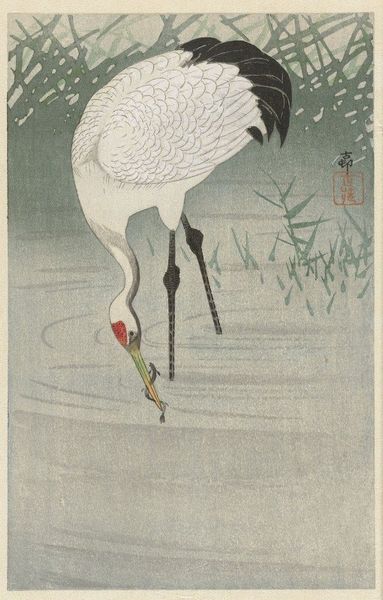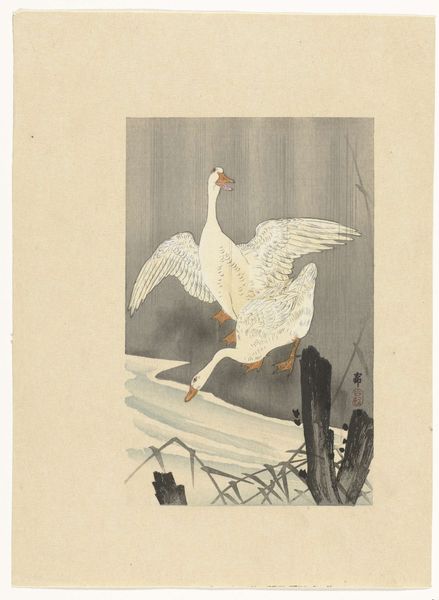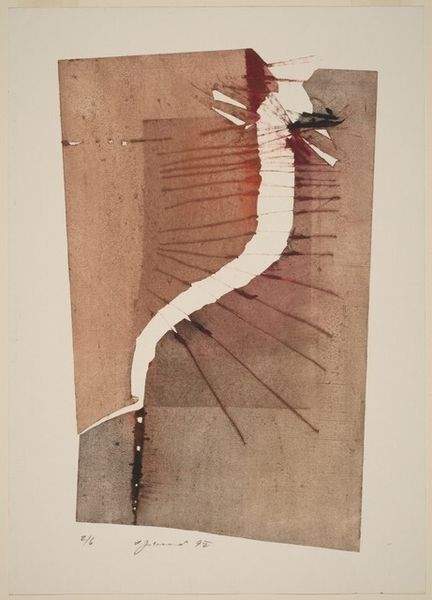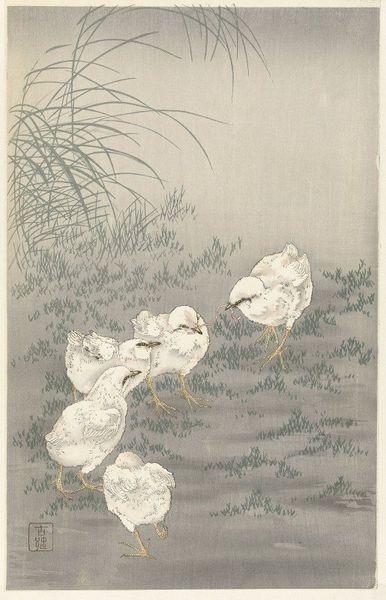
Dimensions: height 345 mm, width 189 mm
Copyright: Rijks Museum: Open Domain
Curator: Well, this watercolor painting presents us with a quiet, almost melancholy scene. I understand this piece by Ohara Koson is entitled "Tamme ganzen in regen" – or "Tame Geese in Rain" dating somewhere between 1900 and 1936. Editor: The pervasive grayness really grabs you, doesn’t it? It feels so heavy and damp. The rain seems to wash away color, and yet there's an inherent tranquility about it. These geese feel so…still. Curator: Absolutely. And the context is Ukiyo-e, a Japanese art movement that flourished from the 17th through 19th centuries, largely known for woodblock prints and paintings depicting everyday life, landscapes, and…well, animals. Koson revitalized the genre with his bird-and-flower paintings, or kachōga. Editor: Right. Geese, especially in pairs as seen here, are often interpreted as symbols of marital harmony and fidelity in Asian art. Given the somber setting, I wonder if Koson intended to evoke a feeling of resilience, that even amidst hardship, familial bonds endure? Curator: It's a compelling thought. What I also find striking is the very muted color palette. It pushes beyond typical impressionistic renderings toward an atmospheric realism while softening hard edges. Koson uses the western watercolor to interpret Eastern aesthetics, but that grayness certainly plays a significant role, perhaps symbolizing a period of uncertainty. We do have to recall Japan experienced significant socio-political upheaval during this time. Editor: You're right. Looking closely, those almost skeletal trees could stand for cultural or personal hardship and yet…those geese. There’s something stoic in their posture. Despite everything, they simply endure. I can’t help but see those muted tones reflecting psychological burdens being carried at the time. Curator: A convincing parallel. By integrating watercolor techniques within a classical tradition, Koson offered new approaches in a time of cultural transition in Japan, I appreciate how he allowed the natural world to serve as a stage for observing human experience. Editor: And I'm struck by the way the image invites you to project your feelings of somber peace and enduring resilience to interpret that quietude. It lingers in the mind.
Comments
No comments
Be the first to comment and join the conversation on the ultimate creative platform.
